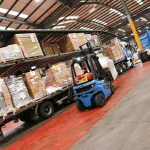
Unlock Massive Supply Chain Savings with These Smart Optimization Tricks
Introduction: Why Supply Chain Optimization is a Game-Changer
In today’s global economy, a company’s supply chain can make or break its profitability. Rising fuel costs, unpredictable consumer demand, and global disruptions have forced businesses to rethink how they manage logistics, procurement, and distribution. The good news? With the right strategies, companies can unlock massive savings while simultaneously improving efficiency.
This article reveals smart optimization tricks every business should adopt to trim expenses, reduce waste, and create a more agile supply chain. Whether you’re a small retailer or a multinational enterprise, these tips will help you cut costs without sacrificing quality.
Understanding Supply Chain Costs
Hidden Costs That Drain Profits
Many businesses underestimate the hidden costs lurking within their supply chain. These include:
-
Excessive inventory storage fees
-
Product shrinkage and spoilage
-
Expedited shipping costs due to poor planning
-
Administrative inefficiencies in procurement
The Role of Logistics, Warehousing, and Procurement
Supply chain expenses typically fall into three buckets:
-
Logistics: Transportation, fuel, and customs clearance.
-
Warehousing: Rent, utilities, and inventory handling.
-
Procurement: Supplier contracts, raw materials, and import/export fees.
Understanding where costs accumulate is the first step toward unlocking savings.
Common Challenges in Supply Chain Management
Rising Transportation Costs
Global fuel price fluctuations and driver shortages have increased freight costs significantly.
Inventory Inefficiencies
Overstocking ties up capital, while understocking leads to lost sales. Striking the right balance is a constant challenge.
Supplier Reliability Issues
Dependence on unreliable suppliers often results in delays, higher costs, and customer dissatisfaction.
Smart Optimization Tricks for Supply Chain Savings
Leveraging Data Analytics for Smarter Decisions
Data-driven insights allow businesses to forecast demand accurately, optimize routes, and reduce waste. Advanced analytics tools can identify inefficiencies that human oversight often misses.
Implementing Lean Inventory Practices
Adopting Just-in-Time (JIT) inventory ensures companies only order stock when needed, reducing storage costs and waste.
Embracing Automation and AI in Logistics
Automated warehouses and AI-powered routing systems help minimize labor costs, improve speed, and reduce errors.
Negotiating Better Supplier Contracts
Long-term supplier agreements, volume discounts, and diversifying suppliers reduce risk and unlock better pricing.
Technology’s Role in Supply Chain Optimization
Real-Time Tracking and IoT Devices
IoT sensors provide real-time visibility of shipments, reducing theft, spoilage, and delays.
Cloud-Based Supply Chain Management Systems
Cloud platforms allow seamless coordination between suppliers, manufacturers, and retailers, reducing communication delays.
Predictive Analytics for Demand Forecasting
Predictive tools analyze market trends and historical sales data to forecast demand, preventing costly overstocking.
Sustainable Practices That Save Costs
Reducing Packaging Waste
Optimized packaging lowers material costs and reduces shipping expenses by minimizing volume.
Green Transportation Solutions
Switching to electric or hybrid delivery vehicles reduces fuel dependency and long-term costs.
Energy-Efficient Warehousing
Solar panels, LED lighting, and automated climate controls cut utility bills significantly.
Case Studies: Companies That Saved Big
How Amazon Streamlined Last-Mile Delivery
Amazon reduced delivery costs by introducing local delivery hubs and experimenting with drones for faster, cheaper deliveries.
Walmart’s Use of AI in Supply Chain Efficiency
Walmart implemented AI-driven forecasting systems that improved demand accuracy, cutting down on stockouts and excess inventory.
Measuring Success: Key Supply Chain KPIs
Inventory Turnover Ratio
A high turnover ratio indicates efficient stock movement, reducing storage costs.
Order Accuracy and Fulfillment Times
Tracking errors and late shipments helps businesses streamline processes for efficiency.
Cost-to-Serve Analysis
This KPI measures how much it costs to serve each customer, highlighting areas for cost reduction.
Future Trends in Supply Chain Optimization
Blockchain for Transparency
Blockchain enhances traceability, ensuring secure transactions and reducing fraud in the supply chain.
Autonomous Vehicles and Drones in Logistics
Driverless trucks and drones promise faster, cheaper, and more reliable deliveries in the near future.
FAQs on Supply Chain Savings
Q1. What’s the fastest way to reduce supply chain costs?
Start with demand forecasting and route optimization, as these typically yield immediate savings.
Q2. How can small businesses optimize supply chains?
By leveraging cloud-based tools, negotiating with multiple suppliers, and avoiding overstocking.
Q3. Is automation affordable for mid-sized companies?
Yes, many scalable warehouse automation systems are designed for SMEs at lower upfront costs.
Q4. How does sustainability save money in the supply chain?
It reduces energy bills, fuel expenses, and packaging costs while boosting brand reputation.
Q5. What KPIs should businesses track?
Inventory turnover, order accuracy, fulfillment times, and cost-to-serve are essential.
Q6. Which industries benefit most from supply chain optimization?
Retail, manufacturing, agriculture, and e-commerce gain significant savings from efficient supply chains.
Conclusion: The Path to a Lean, Profitable Supply Chain
Unlocking supply chain savings isn’t just about cutting costs — it’s about working smarter. By embracing technology, sustainable practices, and strategic supplier relationships, businesses can turn their supply chain into a competitive advantage.
The future belongs to companies that invest in smart optimization tricks today, paving the way for profitability, efficiency, and resilience tomorrow.





Add a comment